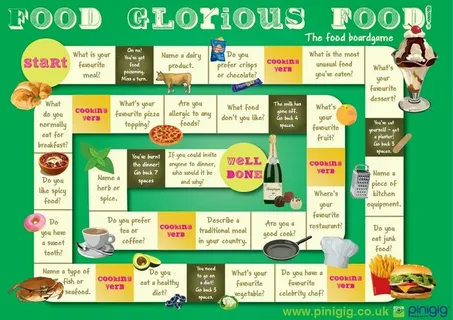Teach conjunctions with food: Deliciously Simple
Outline
- Introduction
- What is the purpose of using food to teach conjunctions?
- The advantages of making grammar instruction exciting and enjoyable.
- What Are Conjunctions?
- Definition and goal.
- Common examples of conjunctions.
- Using Food to Teach Conjunctions
- Innovative ways to integrate food into classes.
- Activities and examples.
- Conjunctions and Food: Lesson Ideas
- Activity 1: Conjunction Cooking
- Activity based on recipes to help you develop your connections.
- Activity 2: Food Group Sorting
- Sorting food items together phrases in sentences.
- Activity 3: Food Stories
- Writing short stories using food and other concoctions.
- Activity 1: Conjunction Cooking
- Benefits of Using Food in Grammar Lessons
- What can make learning memorable?
- Encourages interaction and participation.
- Tips for Successful Lessons
- Keep it interesting.
- Adjusting for different age groups.
- FAQ
- What are some food-related activities that can be combined with other activities?
- What can food benefit in the teaching of difficult grammar concepts?
- Are there certain varieties of food that perform excellently?
- Conclusion
- A recap about the value of food as a way to teach conjuctions.
- Encouragement to use these techniques to benefit you in your studies.
Introduction
Have you ever thought about ways to make teaching consortia less of an obligation instead of enjoyable fun?
Let’s explore why together food as a way to teach conjunctions could transform the way you teach. When you combine grammar with delicious food, you create something more fun and memorable for your students.
What Are Conjunctions?

Before we get in to the meal, we need to be clear about what the terms are.
Conjunctions are words that link to other words, phrases, or clauses. They help us understand sentences by connecting ideas.
Common Conjunctions Include:
- and adds extra information.
- But: Shows contrast.
- Or offers alternatives.
- Because it explains the reason.
- So indicates the result.
Using Food to Teach Conjunctions
Now, let’s look at ways to utilize food in teaching these concepts. It’s not only about taking snacks into the classroom. It’s about creating connections that can be both figurative and literal.
Here are some ideas for fun:
- Conjunction cooking: Make an instructional recipe to demonstrate how to use conjunctions.
- Food Group Sorting Sort food items into groups and describe the method with conjunctions.
- Food stories Write and share stories about food and other concoctions.
Conjunctions and Food: Lesson Ideas
Activity 1: Conjunction Cooking
Here’s a delicious method to learn about conjunctions. Choose a recipe that is simple and ask students to write down instructions together in conjunction.
Example:
- “Mix flour and sugar, then add eggs.”
- “Stir until smooth, because you want a creamy batter.”
Activity 2: Food Group Sorting
Sort various food items into groups (like vegetables, fruits, and so on.) and use conjunctions to explain the process of sorting.
Example:
- “Apples are fruits, and carrots are vegetables.”
- “Tomatoes can be fruits or vegetables, but they are usually used as vegetables.”
Activity 3: Food Stories
Write a story about foods, with conjunctions to connect ideas and sentences.
Example:
- “I went to the market because I needed apples and bananas. I bought some oranges too, so I could make a fruit salad.”
Benefits of Using Food in Grammar Lessons

Food in your classes helps make learning enjoyable and fun. It’s not all about food, although it’s certainly a benefit.
Benefits Include:
- Memorable learning Incorporating grammar into food is a way to help students remember the rules.
- More Participation Food-related activities keep students interested and excited.
- The Real Life Connections The technology makes abstract concepts more concrete and relatable.
Tips for Successful Lessons
To maximize the value of these lessons based on food Keep these suggestions in your head:
- Keep it Engaging Be sure that the lessons are entertaining and engaging. The goal is to keep students involved together combinations.
- Adjust to Age Modify the level of difficulty of your lessons depending on the level of competence and age that your pupils are at.
- Be prepared with all the material prepared prior to the start of the lesson to ensure that everything runs smoothly.
FAQ
Are there any of the easiest food-related activities that can be combined with other activities?
- You can try with recipes to help you practice conjunctions, or ask students to identify and classify food items with conjunctions.
What foods benefit in teaching difficult ideas of grammar?
- Food helps make abstract concepts concrete through visual and tangible examples to help students comprehend and retain grammar rules.
Are there certain kinds of foods that perform desirable?
- Simple, easy-to-make meals Simple, familiar foods are perfect. Think of fruits, veggies and simple recipes that can be enjoyed by all.
Conclusion
The teaching of food concoctions isn’t only a fun way to teach food; it’s an effective method to make grammar classes more fun and productive.
In incorporating food into your mix, you can create unforgettable educational experiences that benefit students as they comprehend and use conjunctions with greater ease. Therefore, why not give it a go and discover how delicious grammar could be?




